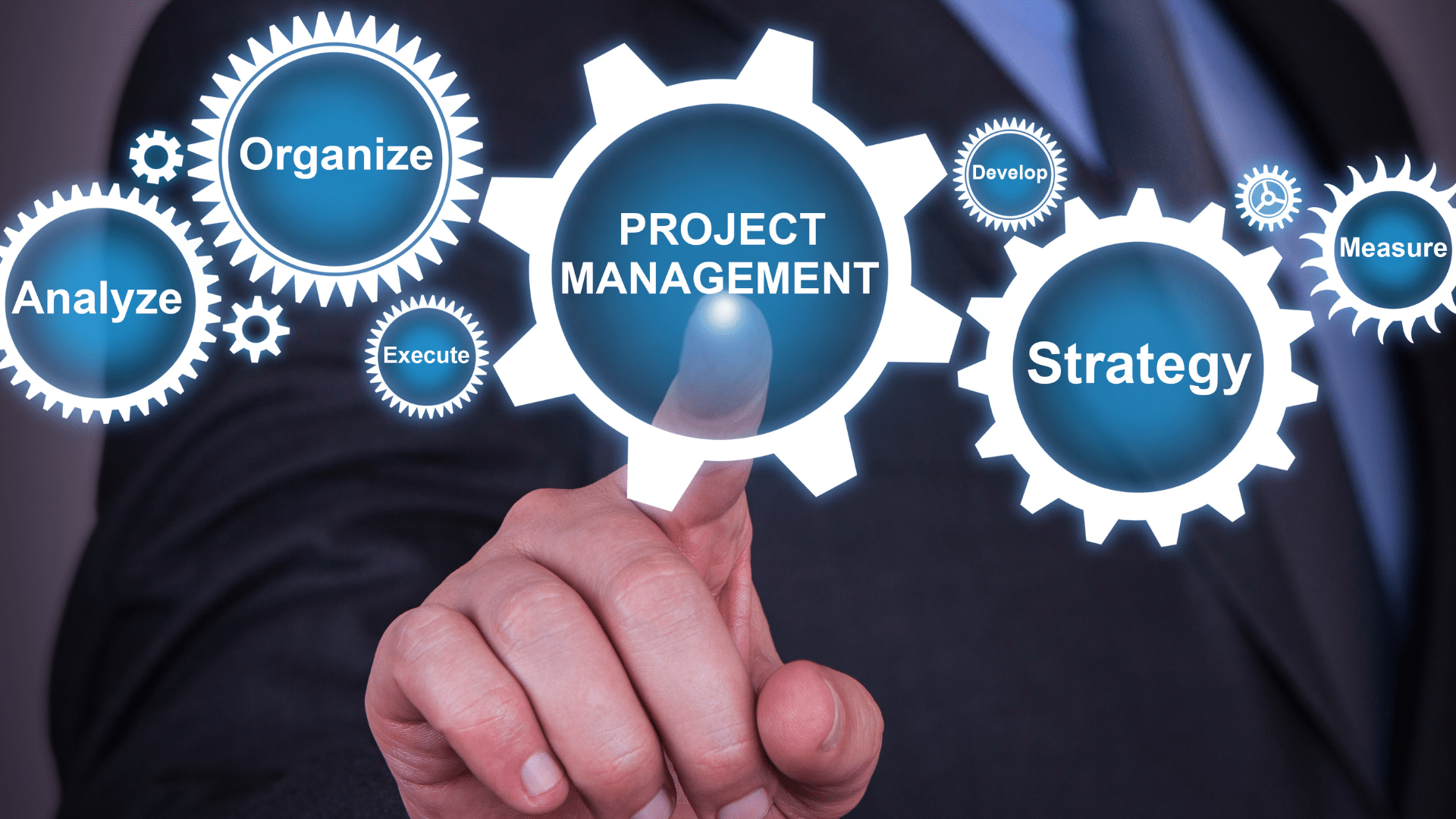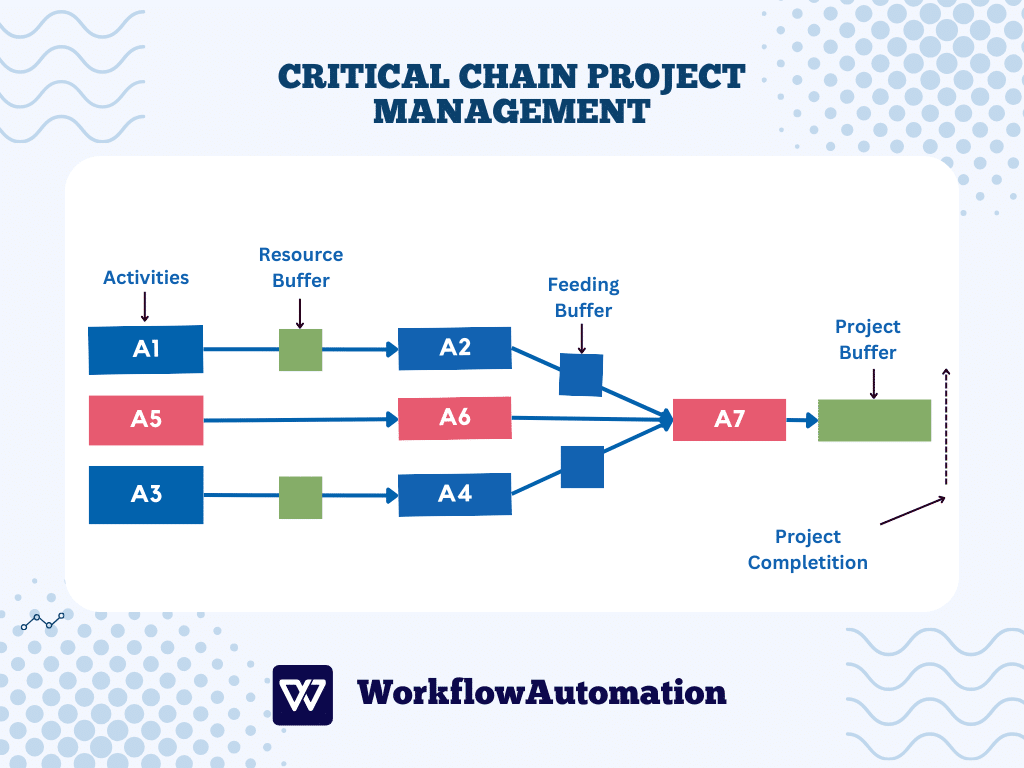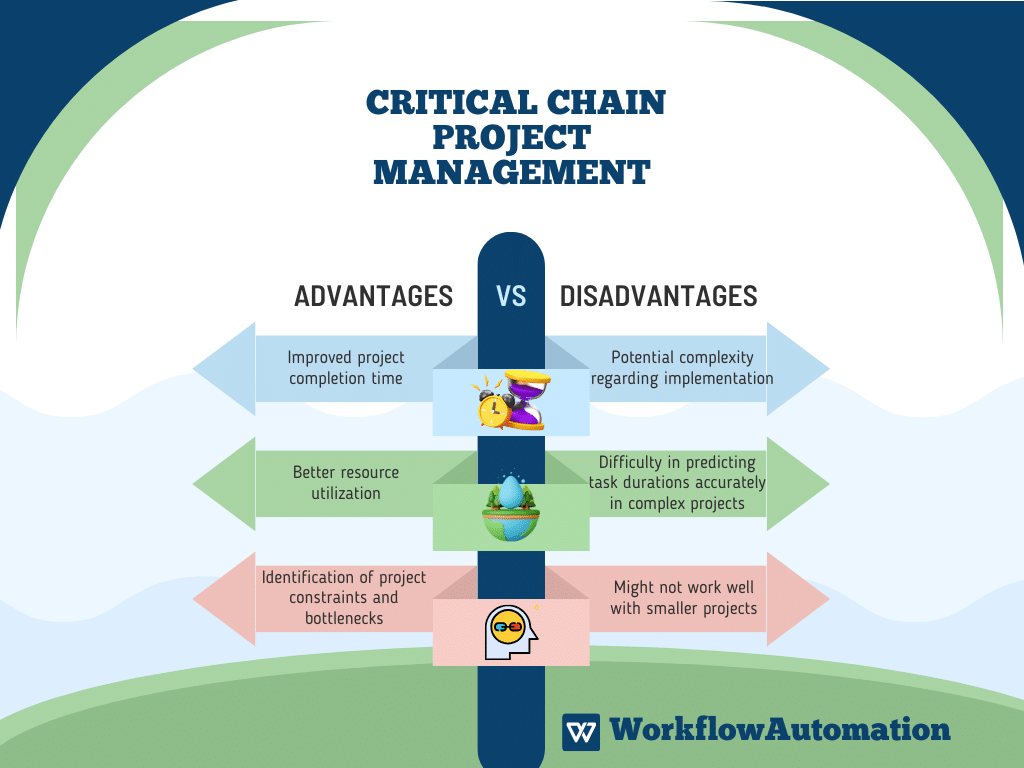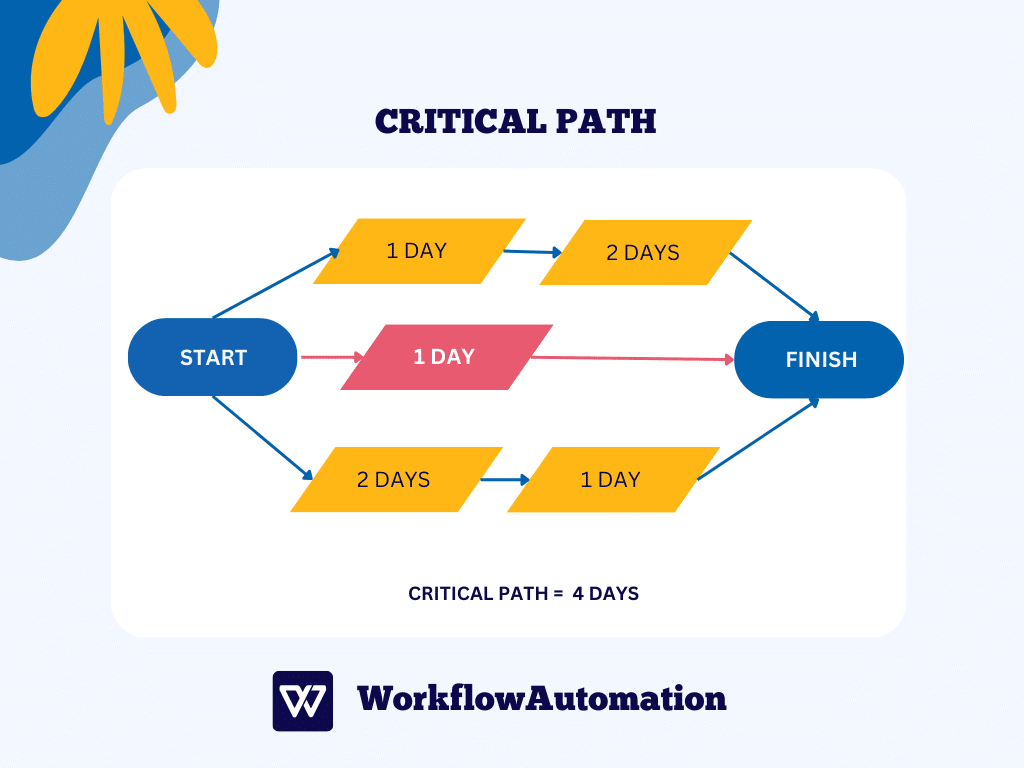In the world of project management, where meeting deadlines is a constant challenge, a new way to get the job done easily is always desirable. That’s exactly what we bring you in this article!
Imagine a world where project teams operate at peak performance, and “on schedule and under budget” becomes the new norm. The good news is this is completely plausible—all you need is effective critical chain project management.
We will take you on a journey into the principles, benefits, and real-world applications of CCPM, so let’s dive right in!
What is Critical Chain Project Management?
Critical chain project management (CCPM) is a project management methodology that focuses on efficiently managing and utilizing resources and identifying and prioritizing dependent tasks.
The main goal is to create a critical chain that leads to successful project completion. But, what is a critical chain?
Well, the critical chain refers to the longest sequence in the project schedule, considering task dependencies and limited resource availability. Once the critical chain is defined, it opens the path to the optimal allocation of resources, increasing the chances of completing the project.
Dr. Eliyah M. Goldratt developed CCPM as a part of a larger project management approach that includes other methodologies like the Project Management Body of Knowledge and the Theory of Constraints.
Now, let’s explore the CCPM advantages and disadvantages to understand its characteristics better.
Critical Chain Method vs. Critical Path Method
The Critical chain method (CCM) and the critical path method (CPM) are often confused due to their similar names and some similar characteristics, but they have crucial differences in their approaches.
Let’s start with their similarities. Both the CCM and CPM focus on task dependencies, helping identify key tasks that must be completed to achieve the project’s objectives. This segment aids in optimizing project and process workflow and generally successful project completion.
On the other hand, the differences between CCM and CPM lie primarily in CCM’s greater attention to necessary resources for tasks and project execution and factors that can potentially limit those resources.
To prevent resource constraints, CCM uses buffers that act as safeguards to ensure smooth project finalization, but we’ll explain them in more detail in the section below.
What Does Critical Chain Project Management Consist of?
The CCPM methodology consists of three components: the critical path, the feeding buffer, and the resource buffer. Let’s take a look at what each of them means and what their role is:
#1. The Critical Path
The critical path is a sequence of dependent tasks whose execution means the completion of the project. In other words, they are the must-complete tasks that form the backbone of the project, and without their completion, the project cannot be successful.
These tasks have a strict order of execution, so if you follow this path, the result will be on the table. On the other hand, if one task is delayed, it will have a cascading effect on the following tasks and so on until the final one, which impacts both the time and budget components of the project.
#2. The Feeding Buffer
As we said, the buffer represents safeguards to ensure smooth project finalization. Now, let’s take a look at how the feeding buffer works.
Tasks that do not belong to the critical path are moved to the feeding chain and referred to as non-critical tasks. Feeding chains run in parallel with the critical path and may intersect with the critical path because one feeding chain affects only one task on the critical path.
That means that multiple feeding chains can and should run simultaneously, as they are essential to prevent delays on the critical path. The following example will clarify what the feeding chain represents and how it correlates with the critical path in the scenario of building a treehouse:
Critical Path:
- Designing the treehouse layout
- Obtaining necessary permits from local authorities
- Procuring building materials
- Assembling the main structure
- Adding safety features
Feeding Chain:
- While designing the treehouse layout, the team simultaneously discusses the treehouse’s interior decoration and color scheme.
- As the main structure is being assembled, some team members start planning the treehouse’s landscaping and exterior design.
- During the construction of the foundation, others begin selecting furniture and equipment for the treehouse.
#3. The Resource Buffer
Unlike the critical path method, CCPM places a much stronger emphasis on resources and their constraints as one of the most significant challenges a project can face.
Resource buffers are there to preempt unexpected circumstances and prevent any resource complications, thus keeping the project on track. That can be achieved by adding extra time between the final task and the end of the project, providing additional space for tasks that might experience slight delays.
Additionally, extra time is inserted between feeding chains and the critical chain, ensuring that delays in feeding chains do not impact the critical chain. Determining reserve resources (workforce, materials, and machines) becomes essential as tasks on the critical chain may require their utilization.
How to Implement Critical Chain Project Management
By adhering to these four steps, there is no doubt that the implementation of CCPM will be successful:
#1. Identify a Critical Path
The first step is the identification of dependent tasks for the critical path, meaning that the project can be finished only with their completion. These tasks are interconnected and interdependent, meaning you cannot move on to the next task until the previous one is completed.
If the previous task is not finished on time, it will lead to a delay in the following task, ultimately affecting the project’s entire life cycle. We have seen that tasks on the feeding chain also impact tasks on the critical path, so you should identify those tasks as well.
#2. Determine The Amount of Resources
For the execution of tasks, resources are necessary, and determining the optimal quantity of resources is the next step. Whether human labor, money, office space, tools, or machinery, the task is always the same—determining how much of everything you need to execute all the tasks on the critical path.
The second component of resource determination is to take into consideration the potential constraints of resources that you may encounter during the project.
#3. Install the Buffers
It is necessary to keep every project under control since almost every single one faces the risk of resource constraints due to various reasons. The installation of buffers helps you accomplish this.
It is mandatory for your project plan, within CCPM methodology, to include detailed risk analysis and the approach to prevent or mitigate them if they arise.
#4. Maintain Team’s Focus
The tasks that make up the critical chain are interdependent, meaning they need to be solved in a specific order to reach the project’s goal. Therefore, the team must proceed step by step and direct all their attention to the current task.
Of course, this does not imply a narrow focus on the task as separate parts but as part of a whole. However, it is much more efficient if the team focuses on the current task. This involves avoiding multitasking and tracking progress, where CCPM software like LiquidPlanner and Asana can be helpful.
5 Best Practices for Critical Chain Project Management
Below, you’ll find tips for achieving a successful implementation of the CCPM methodology:
- Limit task switching: Discourage team members from constantly switching tasks. It consumes valuable time and mental energy, leading to reduced productivity and potential delays in project completion.
- Minimize time waste: Encourage efficient work practice. Set clear expectations to optimize work hours and keep distractions to a minimum, ensuring the team stays focused on critical tasks.
- Project oversight: Maintain active project oversight to track progress and identify potential issues. Regular check-ins with the team provide an opportunity to address challenges and maintain project alignment.
- Buffer allocation: Strategically allocate buffers to safeguard against uncertainties and delays. Monitoring buffer consumption allows for timely adjustments, safeguarding the project’s timeline.
- Efficient resource management: Optimize resource allocation to maintain a smooth workflow. You should identify critical resources and allocate them appropriately to ensure their availability when needed.
Conclusion
Critical chain project management paves the way for successful project completion by skillfully managing resources and prioritizing tasks. Its strategic use of buffers fortifies the project against uncertainties, while efficient resource management ensures a smooth workflow.
Adopting CCPM’s best practices, like limiting task switching and minimizing time waste, empowers teams to navigate complexities effectively. With sharp oversight and wise buffer allocation, CCPM guarantees project alignment and timely adjustments.
Embrace CCPM as your guide, and you’ll see your project’s tasks and resources come together in balance.









